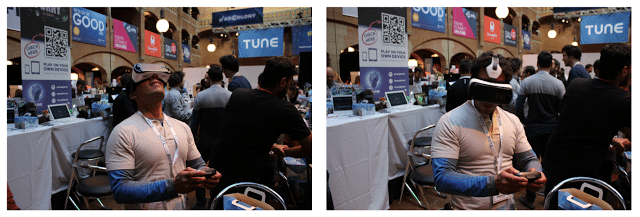
What Makes This “Real”? Virtual Reality in Tech
Google IO/ Facebook F8 Chronicles March 25-26 | May 28-29 Moscone Center, San Francisco CA
Two major players, Google and Facebook, are working to create virtual reality tools that can bring VR experiences to the general population. Google’s VR platform, Google Cardboad, uses a cardboard cutout to mount your phone and form a headset. Carboard was first introduced at the 2014 Google I/O developers conference for Android devices and has since been adopted by more than a million users. Meanwhile in 2014, Facebook acquired Oculus, a company working to develop head-mounted VR displays.
Cardboard screenshot
In comparison, at the 2015 F8 Facebook Developer Conference, the VR presentation launched into a talk about our definitions of “real”. Michael Abrash, chief scientist at Oculus, gave a thought-provoking presentation about how our “realities” are formed by input from all of our sensory receptors – vision, hearing, smell, taste, etc. – and are therefore more flexible than we may have previously thought.
Despite this fact, VR is on its way. Google, in particular, has hit the ground running in order to bring VR to the general public. These new technologies suggest that the future holds the ability to have any experience with anyone in any location at any time. At that point, what will our realities be?



